
views
X
Trustworthy Source
Cleveland Clinic
Educational website from one of the world's leading hospitals
Go to source
Luckily, there are several ways to treat this condition and manage pain or other symptoms.
Treating Extensor Tendonitis on Your Own

Apply ice for 10–15 minutes, at least 4 times per day. Reduce the frequency as required over the next 48 hours. You can also use a wet tea towel, ice pack, or reusable cold therapy and compression wrap. Don’t apply ice directly against your skin. Once the acute pain stage has passed, try applying a heat pack wrapped in a towel for 15 to 20 minutes at a time.
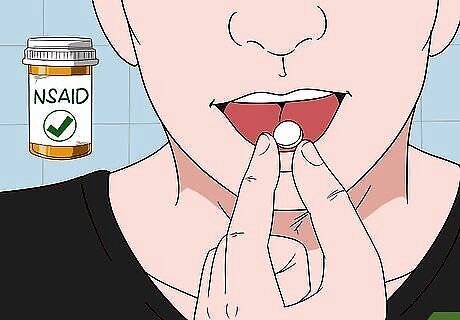
Take NSAIDs to reduce pain and inflammation. NSAIDs are non-steroidal anti-inflammatories like ibuprofen, naproxen, and aspirin. Painkillers or muscle relaxers like acetaminophen and cyclobenzaprine won’t be useful because they don’t treat inflammation. Ask your physician about using NSAIDs if you have hypertension, asthma, a history of kidney or liver disease or ulcer, or are older than 65. Consult your doctor if you are on any other medications, as NSAIDs can impact the effects of other medications.
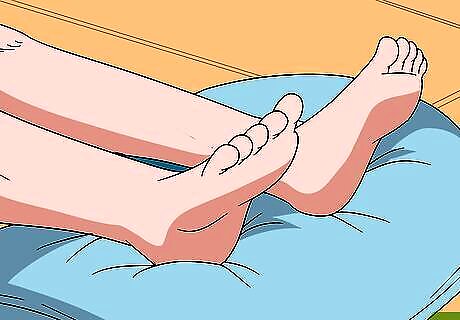
Stop overusing the tendons until you’re completely pain-free. This can take several days to a couple of months. Identify what motions are creating the problem (such as running) and take a break from that activity as best you can. If the tendonitis flares up at work, see if your employer will let you switch to a different activity. Since this injury usually occurs from overuse, trying to resume your previous level of activity even when your pain seems lessened can worsen your injury and increase the time it needs to fully heal. Resume activities gradually and under the guidance of a health professional. If your tendonitis becomes chronic, it can lead to tendinosis, which is a non-inflammatory degeneration of the tendon that takes 3–9 months to heal.

Begin rehabilitation once you can walk or flex your hands without pain. Do stretching exercises like toe raises if you’re experiencing foot tendonitis. If you have hand tendinitis, try placing your palms together in front of your face, then raising your elbows out and upwards while keeping your hands still. Hold for 15 seconds and repeat 3 times. To stretch your feet, kneel down with your feet pointing backwards underneath your bottom and flatten your ankles towards the floor. Tight calves can contribute to foot tendonitis. Stretch your calves by standing on a step with the heel hanging off the back of the step and dropping your heel down. Do this no more than 3 times for 30 seconds each. Once your foot tendonitis improves, loop a resistance band over your toes and pull down gently on the band while extending your toes against the resistance. Repeat 10-15 times for 1-3 sets to strengthen your foot’s extensor muscles.
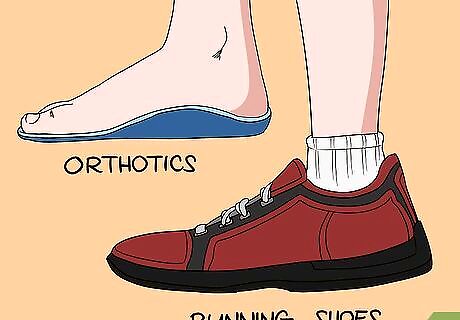
Wear appropriate footwear correctly if suffering from foot tendonitis. Your shoes must fit and cannot be laced too tightly. Try a different lacing pattern by tying your knot at the side or skipping one of the lacing holes near the area causing you pain. This will place pressure on different spots of your foot. Orthotics, or inserts and insoles for your shoes, can pad and support your foot and take away some stress from your tendons. A podiatrist can help fit orthotics correctly for you. Running shoes should be replaced after approximately 300 miles (480 km) of running. After this, the midsole starts to degrade.
Consulting a Doctor

Identify the location and nature of your pain. Tendinopathy presents as pain on the top of the foot, usually described as aching, or an inability to fully extend one of your fingers. If the tendonitis is on your hand, your finger may be jammed, your hand may feel numb or weak, or there may be a cut on the back of your hand or fingers.Tip: If you have pain in the top of your foot, flex your foot downward and have someone apply gentle resistance to the tops of your toes. Try to flex your foot back up against the resistance. If you experience pain while trying to push up, it is likely caused by extensor tendonitis. Diffuse swelling or mild bruising along the top of the foot may be present. Curling your toes may hurt because it stretches the tendons on the top of your foot.
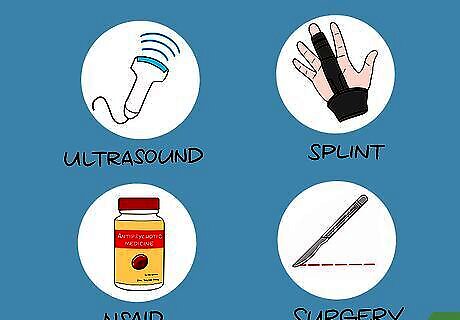
Ask your doctor for a diagnosis and treatment options. Doctors can assess whether you have tendonitis and how severe it is, sometimes by using an ultrasound or MRI. They can also refer you to physical therapy, splint your finger, or for very serious cases notify you that you may need surgery. Your doctor can also prescribe you over-the-counter NSAIDs.
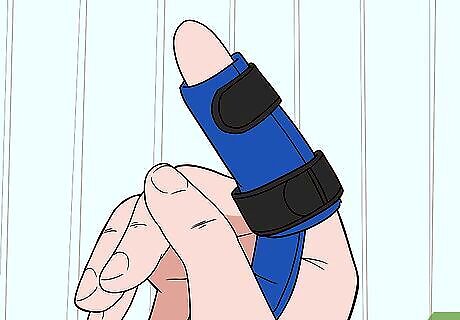
Follow your doctor’s instructions if given finger splints or stitches. Jamming injuries are typically treated with splints or pins which then hold the tendon in place. They should be worn until the tendon is healed, which usually takes 8–12 weeks. Make sure your splint is not so tight that it cuts off blood flow. Contact your doctor if your stitches come apart or you feel sudden numbness around the wound.
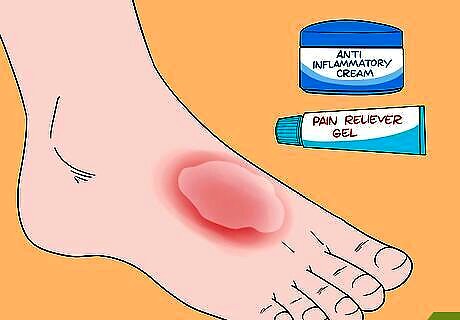
Inquire about anti-inflammatory and pain-relieving creams or gels. These can be used as an alternative to oral NSAIDs. Because the drugs stay where they are applied, there will be less build-up of the drugs in your blood and more remote tissues over time. This is best if you would otherwise be taking oral NSAIDs for more than 3 weeks. Common side effects may include flu-like symptoms and a rash or burning sensation at the application site. Generally, the cream or gel must be rubbed on the appropriate area 2–4 times a day.
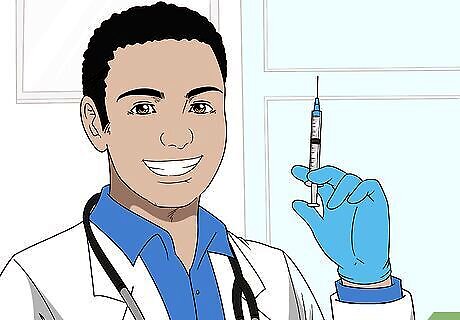
Ask your physician about steroid injections for tendonitis on your feet. These can reduce inflammation but will temporarily weaken your tendons. Steroid injections are useful for short-term pain relief and increased mobility, but are not necessarily a long-term solution. In some rare cases, they could even cause your weakened tendon to tear. If you use blood thinners or certain dietary supplements, you may need to stop taking them for several days to reduce the risk of bleeding or bruising. In some cases, your doctor may decide against injections altogether. Injections can take a few hours to a few days to begin relieving pain. After an injection, you may experience pain and discomfort around the injection site for a few days.

Try physical therapy if your doctor recommends it. Physical therapists will give you stretches and strengthening exercises tailored to your injury, be it to your hands or feet. Some can also use therapeutic ultrasounds or infrared light waves to decrease inflammation and encourage healing.


















Comments
0 comment